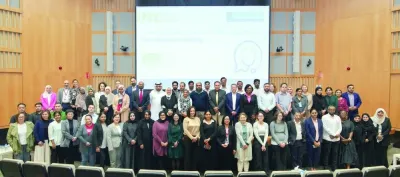Artist's impression of an intersection in the proposed Orbital Highway.
By Ramesh Mathew/Staff Reporter
The Orbital Highway project, part of Qatar's ambitious Expressway programme and aimed at linking the Mesaieed Industrial City (MIC) and suburbs on the southern side with Al Khor and Ras Laffan Industrial City (RLIC) in the northern region, is expected to become a reality towards the end of 2017.
The nearly 200km highway project, the construction of which is already on, is being implemented in four phases, of which three have already been awarded at nearly QR14bn, according to the annual report of the Public Works Authority (Ashghal).
The last phase of 48km, connecting Dukhan Highway with Al Khor bypass, is still to be awarded. The QR3.60bn first phase of the project involves 45km of dual carriageways connecting the Wakra-Mesaieed highway and the under-construction New Doha Port on the southern side with the East West Corridor on the north, Wakra bypass (on the east) and the Orbital Highway on the east. There would be four junctions in the first phase.
The project's second phase, estimated to cost about QR4.30bn, involves the construction of a 49km dual carriageway connecting Salwa Road with North Relief Road. The new road will have five lanes on either side, separated by a central median and with provision for two additional lanes in future.
The project may also feature freight rail, in addition to dedicated cycle paths and walkways. The second phase would have eight junctions.
The 57km third phase linking Mesaieed with Salwa Road is not only the project's most important link but also the costliest project ever undertaken in the country. The work, featuring five junctions, is tendered for QR6.16bn. This phase also consists of five lanes separated by a median and has provisions for two more lanes in future.
The highway, regarded as a vital addition to the country's road network, is expected to ease traffic movement between northern and southern regions without the vehicles, in particular large trucks, entering anywhere in Doha or places in its immediate neighbourhood.
The dual carriageway, which includes 22 major intersections of bridges and tunnels, is expected to segregate heavy goods vehicles from other vehicles through the two dedicated truck lanes in either direction.
The road is also expected to improve safety by removing slow-moving trucks from the path of faster vehicles, said the report.



